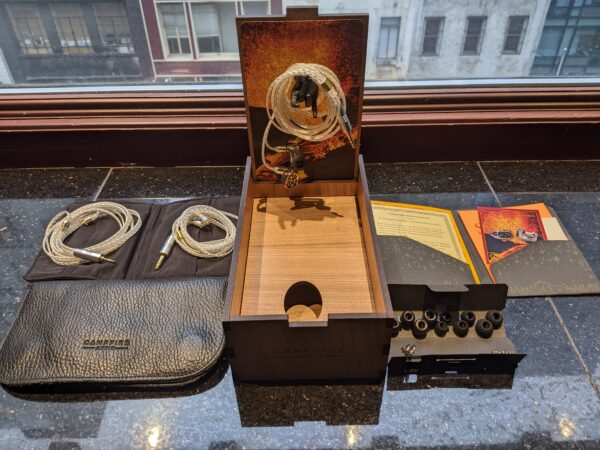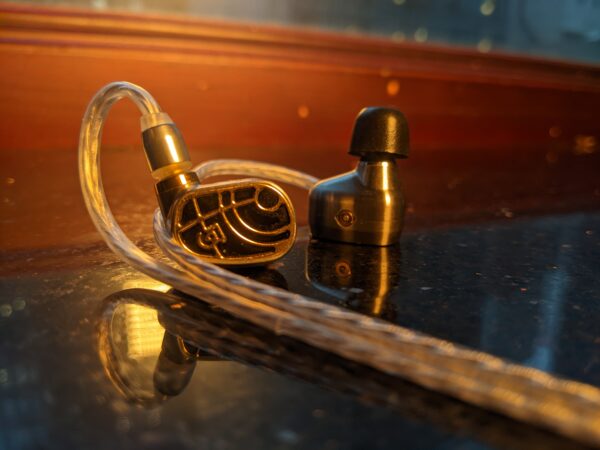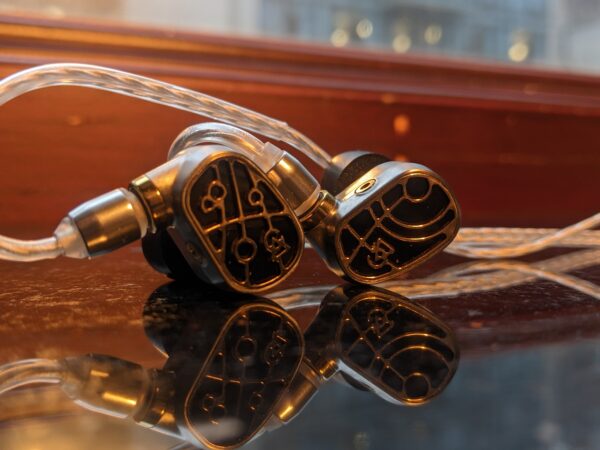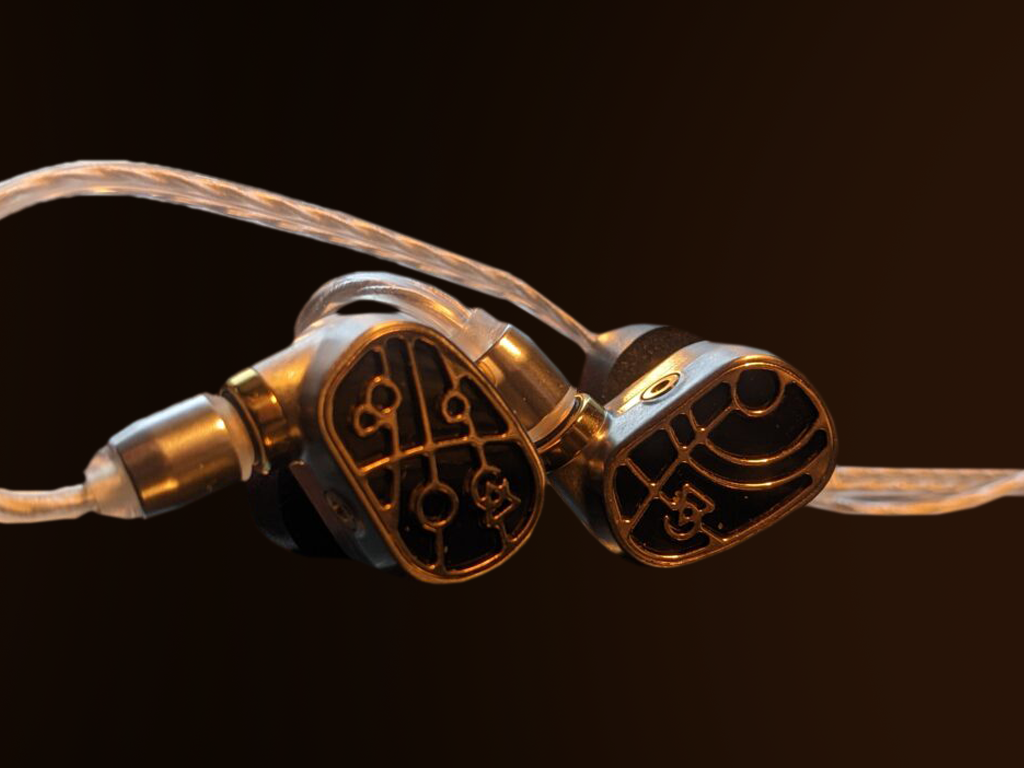Campfire Audio Solaris Stellar Horizon Review
Campfire Audio was launched into fame in 2018 when they released the Andromeda, an IEM that has basically earned itself the status of being a modern classic. The Solaris was released the year, and was met with a similarly positive reception. Now in 2023, Campfire Audio has released new versions of both the Andromeda and the Solaris, sporting new looks and technical upgrades. The new Solaris, or the Solaris Stellar Horizon, now sees an intimidating $2,670 price tag. So, for obvious reasons, I have pretty high expectations for the Solaris Stellar Horizon. Let’s take a look in the box, go over the details in its physical and technical design, and finally, get into what the IEM sounds like and if it really can carry its price.
What’s In The Box?

- Campfire Audio Solaris Stellar Horizon IEMs
- (3) Time Stream Cables: 3.5mm Stereo, 2.5mm TRRS Balanced, 4.4mm Balanaced
- Dimension Folding Leather Case with Magnetic Closure and Complimenting Carabiner
- RipStop Cable Pouch with Magnetic Closure
- 3x Marshmallow Tips (S, M, L)
- 3x Silicon Tips (S, M, L)
- IEM Cleaning Tool
- Campfire Audio Lapel Pin
- “Ohm” Hand and “Lava Flow” Risogaph Printed Display Background
Look and Feel
Alright let’s get the obvious over with: the people asked for a small prosthetic hand and ornate box to display their Campfire Solaris Stellar Horizon IEMs, and that’s what they got. Ok, maybe nobody asked for it, but Campfire gives it to you anyway. There is plenty of enjoyment to be had here, ironic or otherwise, and we can leave it at that. Hand aside, Campfire really didn’t skimp with the accessories. Premium cable pouch, premium cables, great ear tips – all very nice to see.
The IEMs themselves received a significant makeover as well, which I truly appreciate on a non-ironic level. The backs of the IEMs now feature a somewhat esoteric, distinctly Campfire, gold colored faceplate on a black background. Coupled with the golden ring that hugs the MMCX connection and the rest of the Solaris Stellar Horizon’s stainless steel housing, it is quite simply a classy and gorgeous IEM.

The shape of the housing is unusually narrow and ovular, which apparently makes for a great fit. I found no hassle in getting the Solaris Stellar Horizon into my ears, and didn’t have to adjust them at all once they were in. I was also pleasantly surprised to find that the Solaris can provide a pretty deep fit – if you want it to, and I did. I also find the included ear tips are remarkably comfortable. If you’re a foam guy like me, you’re in for a treat with the marshmallow tips, which fit like delicious ear fluff.
Last thing I want to note here, that is perhaps a little ambiguous in nature, is that there’s a distinct firmness felt it the Solaris Stellar Horizon’s fit – the metal housing feels stiff and damping, as if every vibration is getting sent into your ears rather than absorbed into the IEM.
Tech and Specs
| Spec | Campfire Solaris Stellar Horizon |
| Drivers | (1) 10mm DD, (3) Dual Diaphragm BA’s |
| Impedance | 4.4 Ohms |
| Frequency Response | 5 Hz – 20 kHz |
| Sensitivity | 94 dB |
We see some upgrades here from the past editions of the Solaris. Greater output, more high frequency extension, and less distortion is found in the balanced armatures, while new Radial Venting surround the dynamic driver creates a greater air volume and “…expand(s) the space in which the driver physically operates.” According to Campfire, this leads to a greater soundstage and more even dynamic driver performance.
Sound Stage
From the Solaris Stellar Horizon’s look to its sound, elegance is the theme, and that begins with its soundstage. To state it plainly, imaging and staging borders on ethereal. Parts approach from a vast depth in front of my face, meeting it with a phantomly-felt impact. Hard pans are felt originating from across the room, and plucks on acoustic guitars tap the top of my head. I don’t mean to be overly poetic for no reason here, but that really is the experience I’m having with the Solaris Stellar Horizon as I write this review. Parts land heavily in a deep stage with determinate spatial placements, which further enhances the pristine distinction they find in the Solaris’ balance. Frankly, the imaging is stunning, and reveals the Solaris Stellar Horizon’s value and and of itself. Luckily, the IEM has even more tricks up its sleeve in its balance.
Low End
There’s a light and wide low end boost apparently present, but discussing low end timbre rather than amplitudes will likely yield better insights here. Bass parts find a tight and a moderately impactful quality in their mid-bass frequencies. The low end is further informed by a light high bass presence that imparts a subtle but noticeable warmth. A lot of the times, a prominent high bass obfuscates mixes and detracts from the distinction between the mids and low end. However, the Solaris Stellar Horizon might be the first time I could honestly describe a high bass balance as tight. For me, this basically sets a standard for the high level of clarity that an IEM with a warm bass signature is capable of producing.
Overall, I wouldn’t say the low end finds particular prominence in the Solaris Stellar Horizon’s balance. However, the ease with which it could locate and express subtle sub bass details on more ambient tracks is noteworthy. This trait wasn’t immediately apparent, but revealed itself to me after some more extended listening.
Mid Range
Middle frequencies find a fairly natural presentation, but like the low end, have a touch of pleasant warmth drifting in from the low mids, which seem to work in tandem with the high bass. The Solaris’ modest low end gives the middle frequencies a lot of room to express themselves, and find the slightest touch of coloration in their low mids. Overall, mid range frequencies seem to be in the spotlight, and this is perhaps why acoustic genres that are lighter on compression seemed better suited for the Solaris Stellar Horizon. While the Solaris was nonetheless capable of carrying out the more aggressive, wall-of-sound, energetic mid ranges on electronic tracks, it seemed to handle the delicate dynamics on acoustic guitars, pianos, and vocals with a natural tenderness.
Treble
The treble extension on the Solaris seems to air on the side of caution rather than truly reaching deep into the high treble. This makes the rest of its balance feel dense and firm, and is likely why the mid range feels as though it’s the most prominent part of the balance. Low and mid treble find enough amplitude that keep the Solaris sounding natural – while the signature might lack air, its nonetheless shines. The harmonic character on guitars and reverbs has enough amplitude to save the Solaris from a dark signature, and cymbals still retain some sandy grit, but there’s an evident restraint to keep the treble smooth and easy. Painful peakiness or harshness was never close to becoming and issue.
Overall

The SSH is a pretty classy IEM in both design and sound. My lasting impression on the Campfire Audio Solaris Stellar Horizon by the end of this review is one of tasteful restraint, making soft and colorful interventions with a delicate hand, and allowing its deep sound stage to actively portray its by-and-large natural, warm, and firm balance. It’s a sturdy and flashy design, with a timbre that’s equal parts dense and delicate. Going by sheer sound and and build quality, coupled with the premium accessories included with the Solaris Stellar Horizon, I somewhat regretfully concede that the IEM carries its price tag fairly – regretful only because it means I, for one, can’t afford to spend more time with the the IEM than what was granted for writing this review.
The Campfire Audio Solaris Stellar Horizon can be purchased here from Audio46.

